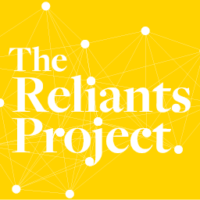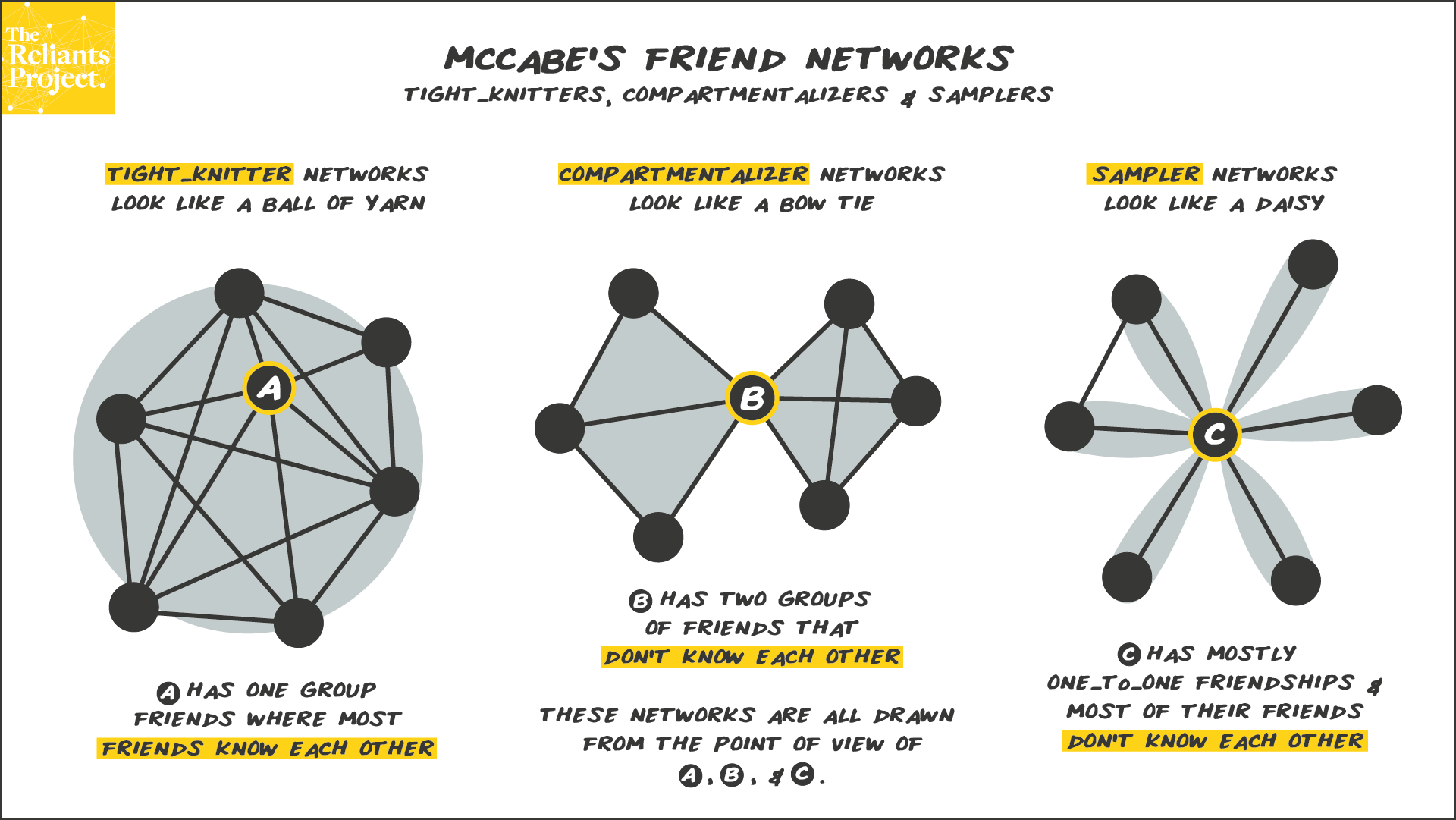This is the 6th post in a series. If you’re not familiar with how to read network graphs, you might prefer to start with Concept 1 or Concept 2.
Let’s take a look at the friend networks of Alice (A), Bob (B) and Charlie (C). These types of network graphs are often called egonets or sociograms, which show a network from the point of view of the “ego”. In this case, Alice, Bob and Charlie are each egos in their own graph.
- Alice has one group of friends where almost everyone knows each other. She would be described as a Tight-knitter.
- Bob has two groups of friends and his friends don’t know each other. He would be called a Compartmentalizer.
- Charlie doesn’t have a group of friends but instead has friends from different parts of his life. Most of his friends don’t know each other. He would be considered a Sampler.
Alice’s friend group has a big impact on her. At it’s best, it provides her with strong emotional and practical support. At it’s worst, it reinforces bad behaviours and can become suffocating. It is easy to balance time and energy spent with friends because all of her friends spend time together.
Bob, on the other hand, has two groups of friends. He can turn to either group for valuable help and support. He can more easily avoid bad behaviours reinforced by one group by limiting his time with them. However, he has to decide how to balance the time and energy he spends with each group.
Charlie doesn’t have a group of friends. Instead, he has many individual relationships with people. It is easy for him to avoid the peer pressure of one group, but he misses out on the cohesive support. Instead of balancing time and energy between groups of friends, he does this with a handful of individuals.
Janice McCabe developed these archetypes based on her research of college students. In her book, Connecting in College: How Friendship Networks Matter for Academic and Social Success, she talks about how she developed them. She shares who is most likely to develop each of these network types. She also explains how they help or hurt students.
Ready for the next concept? The next one in the series is Concept 7: Kevin Bacon and Six Degrees of Separation.

